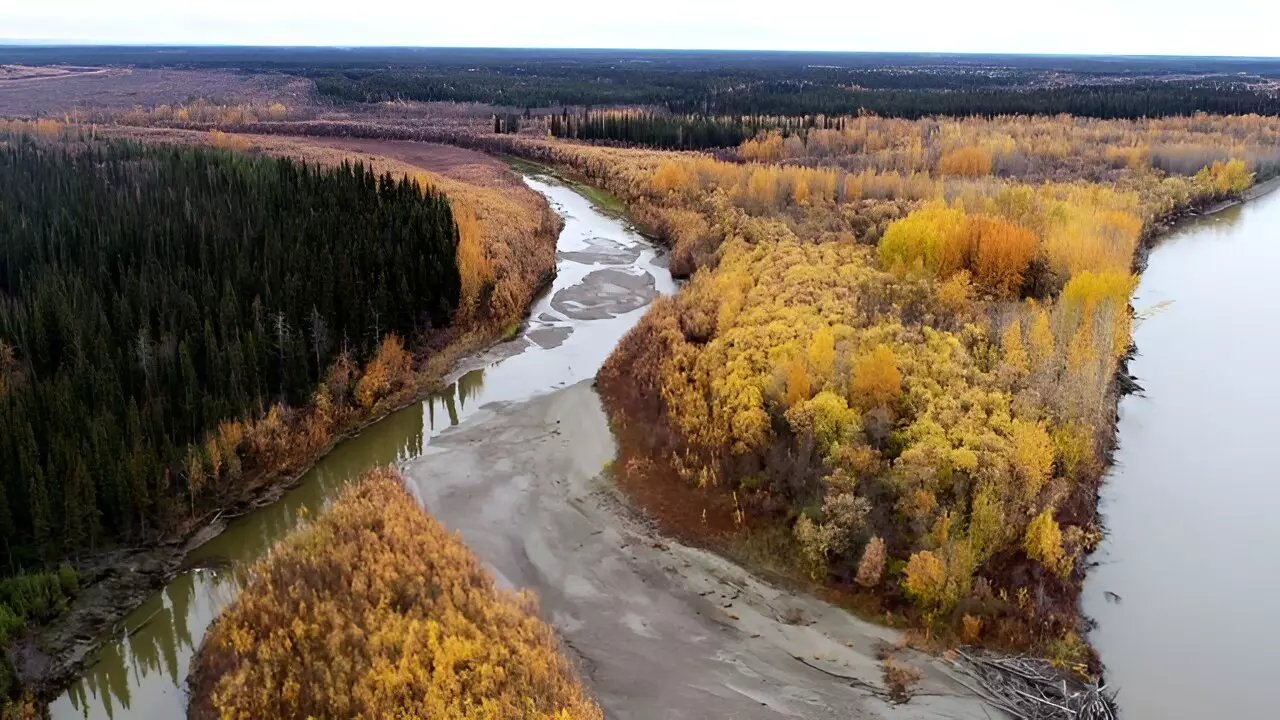The Arctic, an area that has captured the imagination of scientists and adventurers alike, is undergoing alarming transformations as global temperatures rise. Among the many environmental shifts occurring in this fragile ecosystem, the Yukon River emerges as a critical player in the both eroding permafrost and unveiling a toxic secret: mercury. The implications of this process extend to both ecosystems and human health, with the potential for long-term repercussions that demand urgent attention.
Permafrost, the frozen ground that solidifies beneath the surface, has stored vast amounts of mercury for millennia. As the Arctic region experiences climate change at unprecedented rates—heating up to four times faster than the global average—this once-stable permafrost begins to thaw. The warming climate disturbs long-sequestered mercury, releasing it into the environment through river systems like the Yukon. This transformation raises questions about how much of this heavy metal is waiting to be released and its resultant impacts on affected communities.
Recent research studies have highlighted a more nuanced understanding of this mercury “time bomb.” Scientists from institutions such as the USC Dornsife College of Letters, Arts and Sciences and other prestigious universities have developed innovative techniques to accurately gauge mercury released from the permafrost by analyzing sediment deposits in riverbanks and sandbars. This approach promises to yield a more reliable estimate of mercury levels than previous methods relying on shallow core samples.
Mercury is a heavy metal that originates from both natural sources and human activities, like mining and industrial processes. The planet’s atmospheric systems often transport this toxic element toward polar regions, leading to its accumulation in areas such as the Arctic. The remarkable efficiency with which mercury settles into Arctic soils and eventually integrates into permafrost has created a significant environmental concern.
As plants grow in mercury-rich soils, they absorb it and ultimately contribute to an escalating buildup of this toxic metal in the permafrost layer. Warming temperatures increase the pace of this thawing, which not only releases mercury into water bodies but also allows for the potential poisoning of local ecosystems that are fundamentally dependent on the health of their water sources.
In their recent study, researchers concentrated on two Alaskan villages, Beaver and Huslia, to investigate the mercury threat posed by the Yukon River. They employed advanced methodologies, analyzing deeper sediment layers rather than just the surface. This nuanced exploration provided critical insight into the total mercury content, confirming earlier suspicions that mercury levels have been underestimated in prior studies.
As the study highlights, finer sediments are found to harbor more mercury than coarser grains. This revelation is crucial, as it indicates that certain soil types may present greater environmental risks. The researchers theorize that understanding both erosion and reburial processes will be essential in gauging the degree of threat posed by mercury in this dynamic environment.
Although immediate toxicity may not surface in the Arctic communities, the long-term accumulation of mercury within the food web presents a daunting health risk. Indigenous populations, who often rely on fishing and hunting for sustenance, may face heightened exposure to mercury-laden animals. While contamination through drinking water may not be a significant concern, dietary pathways become critical vectors for mercury absorption into the human body.
The nuances of the Yukon River’s behavior further complicate the discussion around mercury exposure. While the river scours and mobilizes sediments that release mercury, it also redeposits them in certain areas. This twin-edged sword of erosion and reburial adds layers of complexity that scientists must navigate to develop an accurate assessment of the mercury threat.
The researchers’ aim is to unravel the mysteries surrounding the potential “mercury bomb” embedded in the Arctic permafrost. Understanding these dynamics is imperative not only for monitoring environmental health but also for safeguarding the future of Arctic communities whose lives depend on hunting and fishing.
As we continue to grapple with the profound implications of climate change, the impending mercury crisis in the Arctic calls for immediate action. By employing innovative research methods and fostering collaborations among scientists, policymakers, and local communities, we may pave the way for more effective strategies to mitigate the forthcoming threats posed by this toxic metal. Ultimately, a concerted effort is essential to fully comprehend—and hopefully diffuse—the mercury threat lurking in the thawing permafrost of the Arctic.

